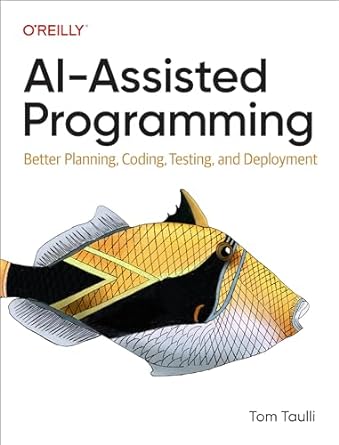What do you think?
Rate this book


222 pages, Paperback
Published May 21, 2024
- Cuiyun Gao et al: “The Current Challenges of Software Engineering in the Era of Large Language Models” ACM Computing Surveys, January 2025, andBy skipping the more “explanation oriented” chapters, Taulli's book can help a novice or very hands-on oriented programmer sit down and start playing with LLMs to see what they might be useful for, but he would do well to check and carefully validate responses to prompts.
- Valerio Terragni, Anne Vella, Partha Roop: “The Future of AI-Driven Software”. ACM Trans. Softw. Eng. Methodol. (Accepted for publication January 2025).